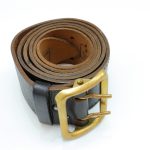Ultimate Guide to Essential Maintenance Tips for Preserving Your Classic UK Sports Car in Peak Condition
Owning a classic UK sports car is a dream come true for many car enthusiasts. These vehicles are not just modes of transportation but pieces of automotive history that require careful maintenance to keep them in optimal condition. In this comprehensive guide, we will delve into the essential maintenance tips that will help you preserve your classic sports car and ensure it continues to perform at its best.
Regular Inspection and Maintenance
Regular inspection and maintenance are the cornerstone of keeping your classic UK sports car in top shape. Here are some key aspects to focus on:
Also to see : Enhance Your Vehicle”s Towing Capacity: Key Guidelines to Stay Compliant with UK Regulations
Thorough Vehicle Inspection
Regularly inspect your vehicle to identify any potential issues before they become major problems. This should be done at least every six months or after every 1000 miles. Pay close attention to the engine, transmission, brakes, steering, and suspension system. Look for signs of wear and tear, leaks, rust spots, or any strange sounds when the car is running.
Oil Changes
Classic cars, especially those from the UK, often have high-revving engines that generate more heat than modern vehicles. This means they require more frequent oil changes, typically every 1000 to 3000 miles. Using the right type of oil is crucial; consult your car’s manual or speak with a specialist to ensure you are using the best oil for your vehicle.
Also read : Step-by-Step Guide: Installing a Heads-Up Display (HUD) in Your UK Vehicle
Fluid Checks
In addition to oil, other fluids such as brake fluid, clutch fluid, and coolant need regular checks. These fluids play critical roles in the performance and longevity of your car. For example, old brake fluid can lead to brake failure, while low coolant levels can cause engine overheating.
Tire Care
Tire care is another vital aspect of maintaining your classic sports car.
Regular Checks
Regularly check your tires for signs of wear and tear, such as cracks or bulges. Tires should be replaced if they show any signs of damage or every six years as a general rule. Maintaining the correct tire pressure is also essential, as under or over-inflated tires can affect the car’s handling, fuel efficiency, and overall safety.
Storage Tips
When storing your car for a long period, it’s advisable to jack it up so that the tires aren’t bearing the full weight of the vehicle. This prevents flat spots from forming. Additionally, moving the car slightly every few weeks can help distribute the weight evenly across the tires.
Keeping the Car Clean
Keeping your classic sports car clean is not just about aesthetics; it’s also a crucial maintenance tip.
Exterior Cleaning
Regular washing and waxing protect the car’s paintwork from damage caused by dirt, bird droppings, and UV rays. Avoid using household detergents, as they can strip the wax coating and damage the paint. Instead, use car-friendly cleaning products. Apply a high-quality wax at least twice a year to shield the paint from damage and keep the car shining.
Interior Cleaning
Interior cleaning is equally important. Vacuum the car regularly, and protect the leather seats by using a leather conditioner. For metal parts on the dashboard or doors, use a metal polish to keep them gleaming.
Regular Driving
Regular driving is one of the best ways to keep your classic sports car in optimal condition.
Benefits of Regular Driving
Cars are not designed to sit idle for long periods. Regular drives help to keep the engine, transmission, and brakes properly lubricated and reduce the risk of rust and corrosion. Aim for a short drive every fortnight, if possible.
Avoiding Adverse Conditions
Avoid driving in adverse weather conditions such as rain, snow, or excessive heat, as these can cause damage to classic cars. If you must drive in such conditions, ensure your car is properly prepared and maintained to handle them.
Preparing Your Classic Car for Winter Storage
Winter storage requires special attention to protect your classic sports car from the harsh effects of snow and cold temperatures.
Pre-Storage Checklist
Before putting your car into storage, give it a thorough clean, both inside and outside. Use car-friendly cleaning products and apply a high-quality wax to protect the paintwork. Change the oil to prevent old oil from causing harm to the engine. Top off all other fluids, such as brake and clutch fluid. Inflate the tires to the recommended pressure and consider placing the car on jack stands to remove weight from the tires.
Interior Care
Inside the car, place moisture-absorbing materials to maintain a dry interior. You could also leave the windows slightly open for ventilation.
Modernization and Upgrades
While maintaining the originality of your classic sports car is important, modernizing certain components can enhance performance and safety.
Upgrading Electronic Parts
Aging electronic parts can be a significant issue in classic cars. Consider upgrading these components to modern equivalents. A professional can help clean and replace components, repair connections, or install new systems to improve reliability and performance.
Performance Upgrades
If you’re looking to enhance your car’s performance, consider upgrades such as new exhaust systems, suspension improvements, or engine tuning. However, it’s crucial to ensure that any upgrades are done in a way that maintains the car’s original character and integrity.
Service Intervals and Checks
Regular servicing is essential to keep your classic sports car running smoothly.
Service Types
Here is a summary of the best practices for car servicing:
| Service Type | Service Interval |
|---|---|
| Regular Maintenance | When your oil and filter need replacing |
| Interim Service | Every 6 months or 6,000 miles, whichever comes first |
| Full Service | Every 12 months or 12,000 miles, whichever comes first |
| Manufacturer Service | As per your manufacturer’s service schedule – check your manual |
Interim and Full Services
An interim service is a less comprehensive version of a full service and should be carried out every 6 months or 6,000 miles. It includes a 50-point inspection, an engine oil change, and a new oil filter. A full service, which should be done every 12 months or 12,000 miles, includes a full inspection and changes to engine oil, oil filters, and air filters. During a full service, a mechanic will analyze all the vital parts of the car, including safety and mechanical systems.
Practical Tips and Checklists
Here are some practical tips and checklists to help you maintain your classic sports car:
FORCES Acronym
The RAC recommends using the FORCES acronym to remember key maintenance checks:
- Fuel: Check fuel levels and ensure the fuel system is clean.
- Oil: Regularly check and change the oil.
- Rubber: Check tire condition and pressure.
- Coolant: Ensure coolant levels are adequate.
- Electrics: Check battery condition and electrical systems.
- Screen wash: Ensure the windshield washer system is functioning properly.
Essential Car Maintenance Checks
Here are 12 essential car maintenance checks you should perform throughout the year:
- Oil and Filter Checks: Regularly check and change the oil and oil filter.
- Tire Pressure: Check tire pressure monthly.
- Brake Pads: Inspect brake pads every 10,000 miles.
- Battery Condition: Check the battery condition every 6 months.
- Coolant Levels: Ensure coolant levels are adequate.
- Air Filter: Change the air filter every 15,000 miles.
- Spark Plugs: Change spark plugs every 30,000 miles.
- Wiper Blades: Replace wiper blades every 6 months.
- Power Steering Fluid: Check power steering fluid levels regularly.
- Suspension and Steering: Inspect the suspension and steering system annually.
- Exhaust System: Inspect the exhaust system annually.
- Interior and Exterior Cleaning: Regularly clean the interior and exterior of the car.
Maintaining a classic UK sports car is a rewarding but demanding task. By following these essential maintenance tips, you can ensure your vehicle remains in peak condition and continues to provide you with a thrilling driving experience.
As a classic car owner, it’s important to remember that your car is not just a mode of transportation but a piece of history that deserves careful attention. Regular inspections, proper storage, tire care, and regular driving are all crucial to preserving your car’s performance and longevity.
In the words of a seasoned classic car enthusiast, “The key to keeping your classic sports car in optimal condition is consistency and attention to detail. By following these maintenance tips, you’ll be able to enjoy your car for many years to come.”
By adopting these practices and staying committed to regular maintenance, you’ll not only enhance your driving experience but also ensure your classic sports car remains a high-performance vehicle that turns heads on the road.











